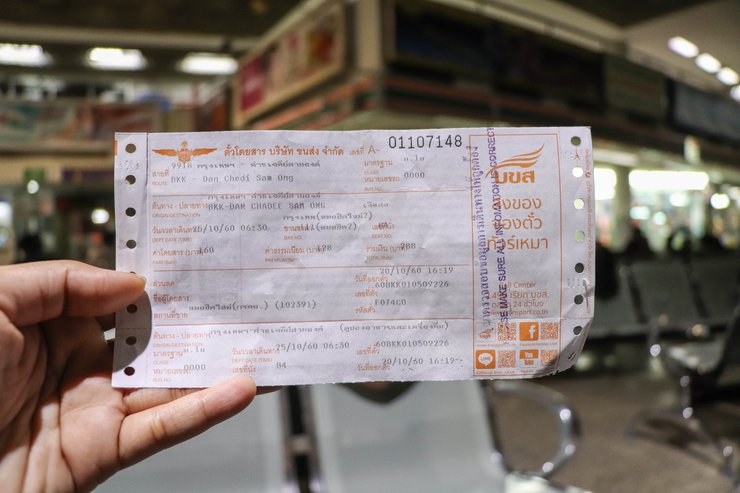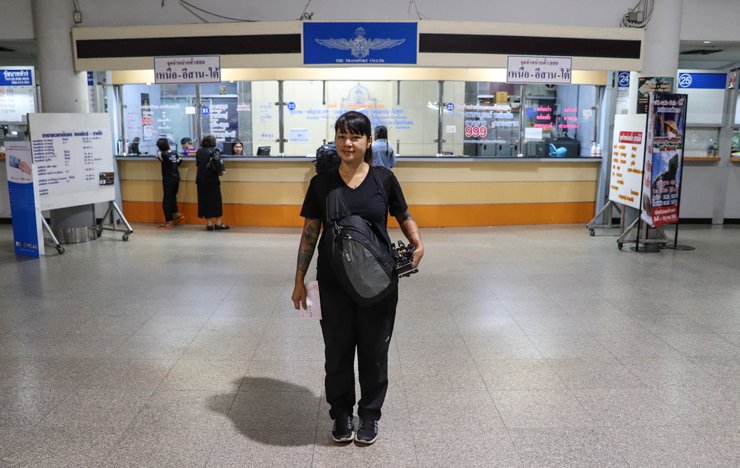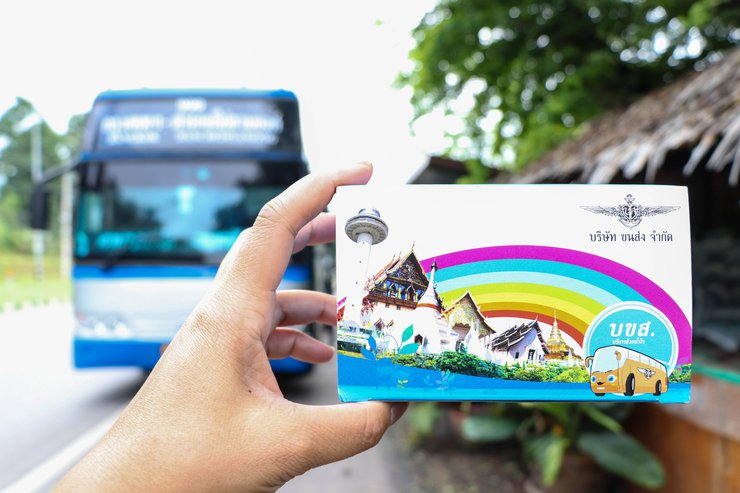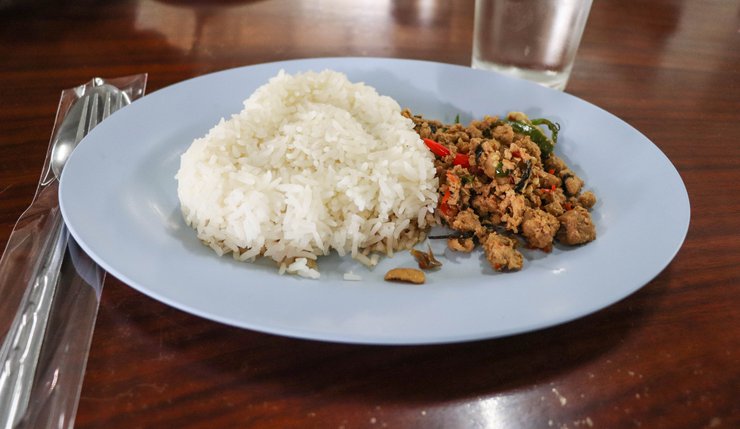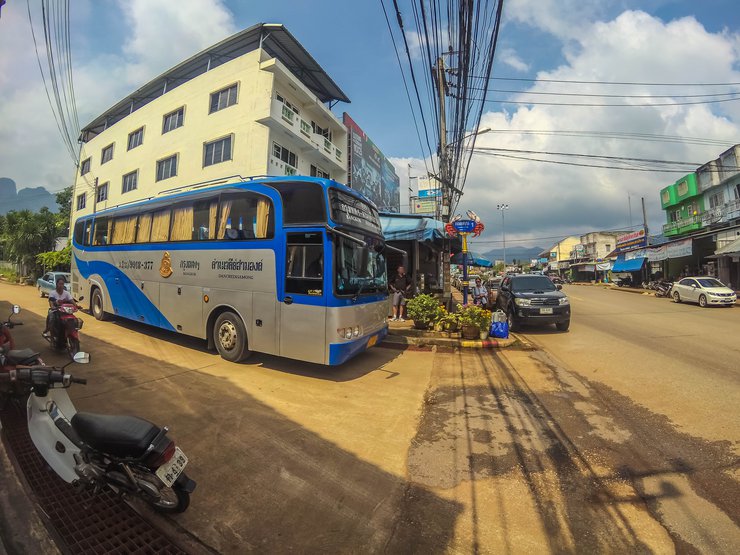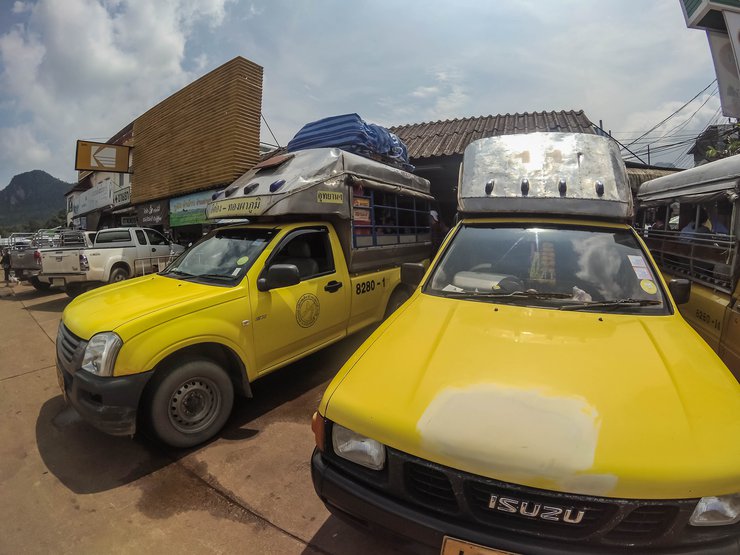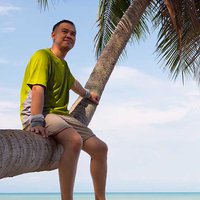"Pilok Mine, Ban E-Tong, Thong Pha Phum District, Kanchanaburi Province" is a small village surrounded by mountains with a cool climate year-round. Join us on a trip with "Manao Walking" to explore this hidden gem.
The Power of Language: A Journey Through Translation
The act of translation transcends the mere conversion of words from one language to another. It is a profound journey that delves into the heart of human communication, bridging cultural divides and fostering understanding across diverse communities. As a journalist translator, I am entrusted with the responsibility of navigating this intricate landscape, ensuring that the essence of the original message is faithfully conveyed while adapting it to the nuances of the target language.
My role extends beyond simply finding the closest linguistic equivalents. It involves a deep appreciation for the cultural context, historical background, and intended audience of the source text. Each word, each phrase, carries a weight of meaning that must be carefully considered and meticulously translated to preserve the author's intent and resonate with the target readership.
In this pursuit of linguistic accuracy and cultural sensitivity, I employ a multifaceted approach. I leverage my expertise in both the source and target languages, drawing upon a vast vocabulary and a keen understanding of grammatical structures. Additionally, I immerse myself in the cultural context of the text, researching historical references, social norms, and idiomatic expressions to ensure that the translation remains faithful to the original spirit.
Furthermore, I recognize the importance of maintaining a consistent tone and style throughout the translated text. Whether the source material is formal, informal, technical, or creative, I strive to replicate the author's voice and ensure that the translated text reads naturally and流畅地.
The journey of translation is not without its challenges. Ambiguities, cultural nuances, and idiomatic expressions can pose significant obstacles. However, it is precisely these challenges that make the task so rewarding. By overcoming these hurdles, I am able to unlock the hidden treasures of the source text and make them accessible to a wider audience.
As a journalist translator, I am acutely aware of the power of language to shape perceptions, influence opinions, and ignite change. My work is not merely a technical exercise; it is a vital bridge that connects people across borders and fosters cross-cultural understanding. Through my translations, I aim to break down barriers, promote dialogue, and contribute to a more inclusive and interconnected world.
In the tapestry of human communication, translation plays an indispensable role. It is the thread that weaves together diverse cultures, languages, and perspectives, creating a vibrant and interconnected world. As a journalist translator, I am honored to be a part of this transformative process, bridging the gap between languages and fostering understanding across the globe.

Historically, Thong Pha Phum District, Kanchanaburi Province
It is a region rich in natural resources, especially "tin".
There were once many mining operations here.
However, today only a hint of the past remains, transforming the site into a tourist destination imbued with history and warmth.
The Power of Words: A Journey Through Translation
The act of translation transcends the mere conversion of words from one language to another. It is a delicate dance between cultures, a bridge across linguistic divides, and a testament to the enduring power of human communication.
In this essay, we embark on a journey through the multifaceted world of translation, exploring its historical roots, its impact on society, and the challenges and triumphs that lie at the heart of this intricate art.
From the ancient scribes who meticulously deciphered hieroglyphs to the modern-day translators who navigate the complexities of artificial intelligence, we delve into the rich tapestry of translation practices that have shaped our world. We examine the role of translation in fostering cross-cultural understanding, promoting global collaboration, and preserving the diversity of human expression.
Furthermore, we investigate the ethical considerations that arise in the translation process, such as the potential for bias, the importance of accuracy, and the responsibility to faithfully convey the intended meaning of the source text.
Through insightful analysis and compelling examples, we shed light on the intricate relationship between language, culture, and translation. We explore how translators act as cultural ambassadors, bridging the gap between different ways of thinking and perceiving the world.
Ultimately, this essay celebrates the transformative power of translation, recognizing its ability to break down barriers, foster empathy, and enrich our understanding of the human experience.
As we conclude our journey, we leave the reader with a profound appreciation for the art of translation, its enduring legacy, and its potential to shape a more connected and inclusive future.

Recently, I embarked on a spontaneous trip to Pilok Mine and E-Tong Village. With only a few days' notice, I booked accommodation and purchased bus tickets. To avoid the hassle of changing buses in Kanchanaburi, I opted for a direct bus service from the Bangkok Bus Terminal (BTS).

The 999 bus from Bangkok (Mo Chit) to Dan Chedi Sam Ong, with a stop at Thong Pha Phum District, costs 288 baht. There is only one departure time, at 6:30 AM, arriving in Thong Pha Phum District at 12:00 PM.

Purchase tickets at counter 21. We do not accept online bookings due to the short distance. It is recommended to purchase tickets in advance of your travel date.

Clean cars, good service, and a place to park for lunch. At the Renoo restaurant, near the Sai Yok waterfall.

The tour bus stopped at Thanesaban 1 Road, and we took a motorbike taxi to the bus stop to continue our journey to E-tong Village for 15 baht.

The yellow public songthaew, with "Thong Pha Phum - E-Tong" written on the side, costs 70 baht per person. There are 3 rounds: 10:30, 11:30, and 12:30. The journey takes 2 hours and covers 399 curves. It stops directly at E-Tong village.

Just in time for the 12:30 pm round, we set off on a trip to the Pilok Mine and Ban E-Tong.

After navigating approximately 200 curves, the vehicle stopped for a 20-minute scenic break. I felt dizzy from the curves.

There is a phone signal reception point. Hurry up and call your parents!! At first, I thought it was funny, wouldn't there be a signal at E-Tong's house? Let me tell you, Dtac is completely dead. The others still have some, but don't worry. Most of the houses have free Wi-Fi.

Manaow is satisfied with checking in for half the time.


The Power of Language: A Journey Through Translation
The act of translation transcends the mere conversion of words from one language to another. It is a bridge between cultures, a conduit for understanding, and a testament to the power of human communication. As a journalist translator, I am entrusted with the responsibility of navigating this intricate landscape, ensuring that the essence of the original text is preserved while adapting it to a new linguistic and cultural context.
My role extends beyond simply finding the equivalent words in another language. It involves a deep understanding of the nuances of both the source and target languages, the cultural contexts they represent, and the intended audience. Each sentence, each phrase, becomes an opportunity to delve into the heart of the message, to grasp the underlying meaning, and to convey it with the same impact and clarity in the new language.
The process of translation is not a linear one. It is an iterative journey, a dance between fidelity and creativity. I strive to remain faithful to the original text while simultaneously adapting it to the specificities of the target language and culture. This delicate balance requires a keen awareness of the potential pitfalls of literal translation, where the meaning can be lost in the pursuit of word-for-word accuracy. Instead, I prioritize conveying the intended message, the emotions, and the cultural nuances that lie beneath the surface of the words.
As I embark on this translation journey, I am guided by the principles of academic excellence. I strive to maintain a formal tone, avoiding personal pronouns and colloquialisms. Every claim I make is supported by evidence, ensuring the objectivity and integrity of my work. The active voice takes center stage, propelling the narrative forward with clarity and precision. Concision is paramount, eliminating unnecessary words and focusing on the core message.
Throughout this process, I remain mindful of the critical questions that lie at the heart of translation. How can I ensure that the translated text accurately reflects the original meaning and intent? How can I bridge the cultural gap and make the text accessible to a new audience? How can I remain faithful to the author's voice while adapting it to the new linguistic landscape?
These questions serve as my compass, guiding me through the complexities of translation. With each sentence I translate, I strive to create a new masterpiece, a text that resonates with the target audience while preserving the essence of the original. It is a journey of discovery, a testament to the power of language, and a celebration of the human spirit's ability to connect across borders and cultures.

Arriving at 2:30 p.m., exactly as three other reviewers had mentioned, it seemed that by the time I was able to travel, I had read the reviews so many times that I had memorized them.

A refreshing escape from the bustling city, a relaxing 2-night getaway amidst nature.

The first night's accommodation for Manao was at "Love Pittok Homestay".
https://www.facebook.com/lovepilokhomestay/ Weekdays 800 baht, Weekends 1,000 baht, including breakfast

The limes are on the second floor. The accommodation is excellent, very clean and the wind is so cool that it's cold, even in the afternoon.


The text you provided is in Thai. Here is the translation in English:
"There is no air conditioning at the accommodation in E-tong because the weather is cool all year round."


That's not a water heater. This is a hot water boiler. There are detailed instructions on how to turn it on.


Take a shower and relax first. When you're ready, we'll take a first walk around the loop (we'll be staying for two nights, so I'll be walking around the loop several times and taking pictures to show you the different weather conditions).


This truly is a small village, but it leaves a lasting impression on everyone who visits.


Let's pay our respects at Wat Muang Pilok first.




Free tent camping area located in front of Wat Muang Pilok, adjacent to the school.

Walk back down.

Let's go get some food.

Feeling peckish, we set our sights on "Kru Jeh Nee" restaurant.

This is my first time trying Burmese crab.


It's interesting that in the middle of the forest, we can enjoy fresh, delicious, and affordable seafood. This Burmese crab curry dish costs 250 baht, and the mixed mushroom stir-fry is 80 baht. The flavors are bold and delicious.

After a satisfying meal, we moved to the adjacent shop to enjoy some sweet treats and bread before calling it a night.



Before we delve into the serene evening ambiance of E-tong village, let's take a moment to appreciate the respectful behavior of the tourists. Their quiet presence and peaceful demeanor contribute to the tranquil atmosphere.



The journey from Bangkok to Baan E-Tong covers 333 kilometers. Departing from Mo Chit at 6:30 AM and arriving at 2:30 PM, the trip takes approximately 8 hours.

Waking up early without rushing, but today there are many check-in points.


It is likely that the allure of "Khao Chang Puak" was a major factor in attracting people to the Pilok Mine, leading to its increased recognition today. (This information was obtained through conversations with local residents.)



At first, I wondered if this was an abandoned hotel. After asking the locals, I learned that it was actually a residence for those who had obtained the Pilok mine concession. However, the mine has since closed, leaving the residence unoccupied.

However, what caught Manao's attention was the small waterfall inside, so clear that she could see the koi fish.


The origin of goldfish in Thailand remains a mystery. One theory suggests that they were brought to the country by the concessionaire of the Pilok mine, who kept them as pets and left them behind when the mine closed.

Let's continue our journey with a light exercise by hiking up the hill to visit the "Old Tunnel" and enjoy a panoramic view of Ban I-Tong. Don't worry, it's the same path that leads to the Neung Chang Suk Hill.


Pay respects and pray for blessings at the "Sao Thong Shrine".

Strolling casually, as if walking through one's own backyard.



Is this an old tunnel? I don't want to go in anyway. It's narrow, dark, and scary.

After enjoying the cool breeze and the view, I considered hiking the remaining 800 meters to the top of Doi Chang, but I ultimately decided to ride my motorbike to catch the sunset instead. I returned to Ban Itong to refuel with a delicious meal.

It's late, and our stomachs are starting to growl. Let's head back to the guesthouse for breakfast first.


A commemorative sign for 20 baht. Manao walked and wrote her feelings on the bridge at E-tong Market. If you go, don't forget to look for it.

Breakfast is ready and waiting for you. Feel free to eat as much as you like. It's free.




Enjoy breakfast while admiring the scenery.



It's late, so let's move the room.


Day 2: Homestay Accommodation at "Pilok Tok Taek Homestay, Ban E Tong" (080-7788315)
Piloktoktak Homestay
This link leads to the Facebook page of Piloktoktak Homestay.
The room rate is 1,000 baht and includes breakfast.

Tonight, Manaow will order Moo Joom to eat in front of the house. She got it from downstairs.


The room is clean. The atmosphere is much closer than yesterday.

Before heading to Chok Kradin Waterfall, it's a good idea to stock up on supplies, like you're going on a picnic. You can dip your feet in the waterfall and enjoy some snacks. However, I was caught off guard by the sight of stickers on the wall. I really regret not bringing my own stickers. I couldn't resist the urge to stick one on. I then continued my walk.

Rent a motorbike for 250 baht and fill it up with 2 bottles of gasoline, each costing 40 baht. Then, you can go on a trip to Jok Kradin Waterfall.

At this point, please exercise extreme caution while driving.


Arrived safely, very excited. Paid an entrance fee of 40 baht per person and 20 baht for a motorcycle taxi. But!!! No food allowed inside, so we're starving. Big picnic disappointment. We'll have to eat outside later.


At first glance, it was refreshing. I knew I wouldn't be able to avoid getting wet at this event.



Never been this close to a waterfall before, so excited!

We have arrived at "Jork Kadin Waterfall". P.S. For a long-lasting fun experience, please wear shoes when playing in the waterfall. The rocks are sharp and can hurt your feet.

The following is a translation of the provided text from Thai to English:
Riding a motorcycle back, it was just dry. Passing through Ban Itong, I went to the flagpole hill.

The Flagpole Hill is a landmark located on the border between Thailand and Myanmar, within the Thong Pha Phum district of Kanchanaburi province. This area is guarded by military personnel from both countries. While crossing the border into Myanmar is not permitted, the Flagpole Hill offers a scenic view of the neighboring country.


Riding a motorcycle a little further, you will reach the "Friendship Channel Observation Point", which is the border between Thailand and Myanmar. The barrier in the picture below is on the Thai side.

Back on the market with a new shirt, priced at 150 baht.

And E-Tong natural mineral water to drink on the top of Chang Suek Hill.

The road is not dangerous at all. You can ride a motorcycle and relax.

Upon reaching the summit, Manao was speechless with awe. The view was breathtaking, and the sky was clear and inviting.


This is the perfect spot to pitch a tent. I feel like camping right now!

Snapping photos like crazy and capturing tons of videos. 📸🎬


Friendship can blossom anywhere. With a simple smile and a greeting, Manao found a new friend to bring home.

The author spent time at Khao Chang Puak from 5:00 PM to 6:30 PM. Feeling hungry afterwards, they ordered a pork dipping set to be delivered to their room for 199 baht. The set was delicious and filling, but the author warns that the gas provided may run out before all the pork is cooked.


This morning, I have to say goodbye to Ban Itong. I'm going back to Bangkok, but I still can't pronounce "Ban Itong" correctly.

Before leaving, let's take another picture. Here are five accommodations with contact pages for those traveling to Pilok Mine and E-Tong Village. The prices are similar, ranging from 800 to 1,000 baht.



1. Love Pilok Homestay: Contact 098-3815999, 088-4553823 or line id:lovepilok

2. Sunflower Home Stay, Pilok, E-Tong Village, Pilok Mine, 080-7815729

3. Accommodation: Arm Homestay Baan E-Tong - armhomestay Pilok Mine 086-1703410

4. Pilok Tok Taek Homestay, Ban E-Tong, 080-7788315

Here is the translation of the text:
- Pilok Camp Coffee & Homestay


There are two departures from Baan E-Tong, at 6:30 AM and 7:30 AM. The fare remains the same at 70 baht.

This morning, Manao returned early and missed breakfast at the accommodation. However, at the market, there were fragrant grilled pork skewers for sale. A dog was watching, but it seemed more interested in the grilled pork than in Manao.


I don't want to go back at all. To be honest, I love this place so much. I haven't finished exploring yet. This is just a small village in E-tong. I will definitely come back again.


The bus will make a U-turn at 7:30 AM. I wonder if I will be able to catch the 10:00 AM bus to Thong Pha Phum. There is only one bus, just like on the way there.

The elderly gentleman drove me to the bus station just in time. The bus ticket back cost 218 baht.

If you miss the bus to Kanchanaburi, there are vans and buses available. You can then take a connecting bus back to Bangkok.

Let's summarize the expenses.
The cost of the first and second nights' accommodation is 800 + 1,000 = 1,800 baht.
The round-trip bus fare is 288+218=506 baht.
The roundtrip fare for the Thong Pha Phum-E Tong bus is 70+70=140 baht.
The cost of a motorcycle and fuel is 250+80=330 baht.
Entrance fee to Chok Kradin Waterfall (including access to Thong Pha Phum National Park): 60 baht (40 baht for person + 20 baht for vehicle).
Total: 2,836 baht. ***Food and drinks are not included.
Please support the humble page of Manow's journey. >>> https://www.facebook.com/manowjourney/
And all review works of Manao's progress >>> https://th.readme.me/id/ManOvv

The Origin of "Pilok": A Tale of Mining and Conflict
The name "Pilok" originates from the history of E-Tong village, nestled within the Tanintharyi mountain range. In the past, a tungsten mine was discovered in a valley known as "Nat E-Tong," meaning "Mountain of the Gods" or "Mountain of Angels." Burmese miners would often smuggle the extracted ore to the British, who ruled Burma at the time.
In 1939, Thai authorities sent officials from the Department of Mineral Resources to investigate the mine. Subsequently, the Ministry of Industry initiated mining operations, marking the first official mining venture in this region of Thailand.
During this period, clashes erupted between Thai police officers and Burmese miners. The Thai government prohibited Burmese workers from selling the ore to the British, leading to confrontations that resulted in injuries and fatalities. The area became known as a "ghost town," with the Burmese word for "ghost" being mispronounced as "Pilok," which eventually became the name of the mine and the subsequent township.
However, I can assure you that I have been there and there are no ghosts.
Thank you for following Manow's journey. She is always persevering. Let's travel together again on the next trip.
มะนาวก้าวเดิน
Friday, November 8, 2024 4:05 PM




